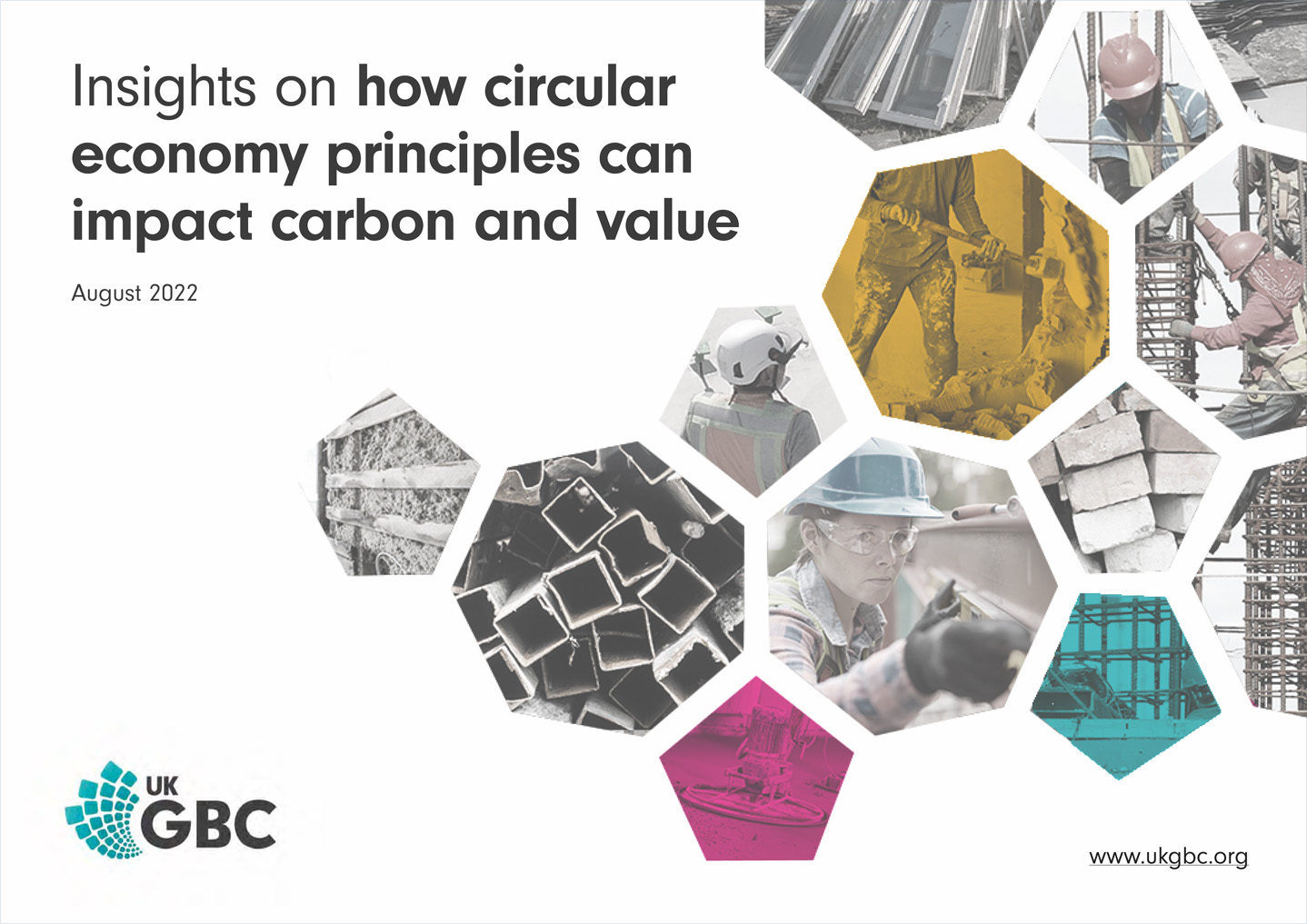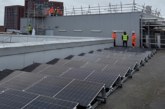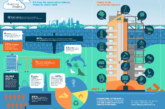
The UK Green Building Council (UKGBC) has published new insight into the positive impact circular thinking can have in delivering whole life carbon reductions and value creation across construction projects.
The global shortage and fluctuating costs of raw materials are increasingly driving the construction industry to explore opportunities to adopt circular thinking, including the re-use of materials and re-purposing of existing building structures. Published in 2021, the Net Zero Whole Life Carbon Roadmap (The Roadmap) confirmed that a net zero carbon built environment is achievable by 2050 and highlighted the essential role the greater use of circular economy principles will play in reducing carbon.
Published on the 11th August 2022, UKGBC’s latest study, ‘How Circular Economy Principles can impact carbon and value‘ seeks to increase understanding within the built environment industry of how circularity can support reductions in whole life carbon. It also seeks to enable project decision-makers and key built environment stakeholders to strengthen the business case for implementing circularity. It demonstrates that circularity benefits not just carbon, but delivers against a much broader set of organisational, social, environmental, and financial aims. The research also offers a library of case studies which evidence the positive impact circularity is already delivering across new and existing projects within the UK.
A key conclusion of the report finds that many new and existing building projects have already used circular economy principles and are able to set out the resulting carbon reductions. Most notable is the level of carbon savings occurring through the reuse of existing assets and materials. For example, the case studies illustrate how significant upfront embodied carbon savings are being delivered through the reuse of existing structures, facades and steel.
The research also identified an important gap in industry knowledge when it comes to measuring and reporting the impact created through applying circularity. The research concludes that measurement is infrequent, inconsistent, and difficult due to the lack of a common set of metrics and methods to measure both the whole life carbon and circularity of projects. Positively, the research also finds that many individuals and groups are working to improve clarity and consistency on these issues.
UKGBC’s Chief Executive, Julie Hirigoyen, said: “The circular economy represents an enormous opportunity for the built environment industry. The research demonstrates that through the smart application of circular practices, significant carbon savings can be made across the entire lifecycle of a building, as well as delivering cost-benefits and providing opportunities to enhance social value.
“Whilst UKGBC’s Roadmap confirmed a net zero carbon built environment is achievable by 2050, it also confirmed that meeting this target will require a transformational shift in the way we approach and deliver construction projects, with circularity as an important part of the solution.”
The findings of this research are primarily intended to be used by project decision-makers and key built environment stakeholders seeking to strengthen the business case for implementing circularity across their projects. This includes developers, owners, and investors in real estate, as well as design, construction, and consultancy teams advising real estate clients on their new and existing developments. Although the focus of the report is on non-domestic and domestic buildings, findings will also likely be relevant to infrastructure projects.








